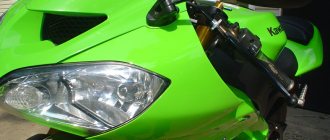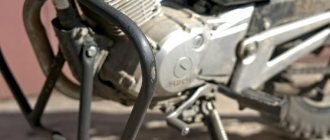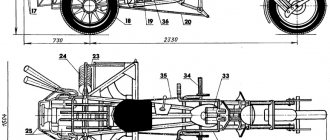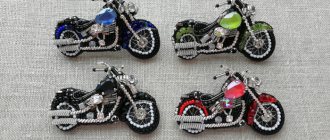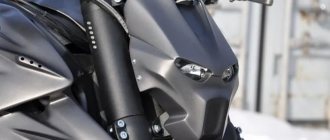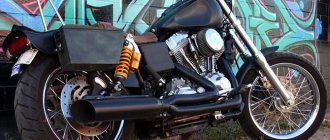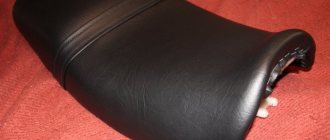Today, each of us, sooner or later, is faced with the need to paint some plastic parts. After all, we are surrounded by many things made of this material: in modern cars, motorcycles and scooters, the number of plastic parts is constantly increasing. The technology of painting plastic has its own characteristics and nuances. This is due to certain properties of this material: it is quite elastic and paint does not adhere well to its surface. Also, the behavior of plastic when coated with paintwork materials depends on the type of plastic. Today, there are a variety of means for coloring this material, so repairing car plastic parts is not a problem.
Painting plastic
The type of material is always indicated in the markings on the inside of the part, so before you start painting, carefully study this abbreviation.
Types and properties of plastics
Plastics are materials with a polymer base. Due to the content of various plasticizers, stabilizers and other fillers, plastic is endowed with good properties of fluidity, ductility, strength, etc. There is a classification of plastic according to the following criteria:
- Chemical composition.
- Rigidity.
- Fat content.
But, perhaps, the main criterion for the characteristics of this material is how the plastic behaves when heated. Based on this property, the following types are distinguished:
- Thermoplastics are plastics that melt when heated and return to their original state when cooled. Thanks to this property, such parts can be welded and soldered. This type of material is the most used for the production of car parts: panels, bumpers, radiator grilles, wheel caps, etc.
| Designation | Decoding |
| RR | polypropylene |
| PVC | polyvinyl chloride |
| PS | polystyrene |
| P.E. | polyethylene |
| PA | polyamide |
| PC | polycarbonade |
| PVA | polyvinyl acetate |
- thermosets are materials that become soft when heated only once - during the formation of the part, but remain hard during subsequent heating. They cannot be welded or soldered, otherwise the material will simply collapse. Thermoset plastics are heat-resistant, so they are used for the production of hoods, trunk lids, fenders, etc.
- Elastomers are plastics that are highly elastic. When loaded, it bends, and when it is removed, it returns to its original shape. The main advantage of this type of material is that even at very high temperatures they remain elastic. Tires, seals, etc. are made from it.
DIY materials for painting plastic
Primer for plastic
Painting a plastic car requires at least a special primer and putty for plastic. But if we are painting old surfaces, then it will be enough to matte the surface with sandpaper, and there is no need to apply primer. In practice, the entire procedure is quite simple.
There are two main types of plastic used by the automotive industry today. The first does not require careful preparation and preliminary priming. The second one is the opposite. They are quite easy to recognize and distinguish from each other in practice. There are two simple methods, which involve buoyancy and combustion of the material. When you place a small piece of plastic in water, it will either sink (in which case there is no need to prime) or remain afloat (in which case it is necessary to prime). Plastic also needs to be primed if it burns with a clean flame, but if it smokes, there is no need to prime it.
When painting plastic elements, it is very convenient to use paint in an aerosol can. Please note that a garage or small workshop is not particularly suitable for carrying out such work. The room should be well ventilated, clean and, importantly, free of dust, since it has the nasty property of settling on freshly painted surfaces.
Determining the need to prime the plastic
Before painting, plastic parts often need to be treated with a primer. Often, but not always. It all depends on what type of plastic this element is made of. It won’t be difficult to determine this at home; all you need is matches or a lighter. With their help, we need to set fire to a small area of the product.
If the combustion process is accompanied by soot, then priming is not necessary. Another life hack - the part needs to be immersed in a container of water, and if it floats up, then no primer is needed.
What color should I paint the interior plastic?
The choice of interior color or its individual elements is a matter of preference. Here are some recommendations, taking into account some body colors, that you can take into account when buying paint.
- For individual interior elements, colors such as silver, bronze, black, gray, chrome and gold are well suited. They can be considered universal for any car interior and exterior color.
- For red cars, red is a good color for the interior plastic inserts.
- On blue cars: individual parts of the interior can be painted in the same color as the body, blue with a mixture of purple, violet or orange.
- On black cars: universal colors, red, blue (cyan), purple, orange and pink (for girls).
- You should not choose a color that is too light (especially white) for painting interior parts, as it will be too easily soiled.
Stages of painting plastic machine elements
Before you start painting, you need to prepare all the tools and materials necessary for the job:
- dye;
- solvent or white spirit;
- acrylic varnish;
- soil for plaza;
- abrasive sandpaper for cleaning.
Next, after dismantling, we move directly to the part.
- We clean the surface with an abrasive cloth to get rid of small irregularities.
- We treat with a degreaser - in our case we use solvent or white spirit.
- We use an antistatic agent to prevent dust from settling on the surface.
- If there are significant irregularities, we putty the defects and clean them. We use a special putty for plastic.
- Degrease the base again.
- Apply primer - 2-3 layers and leave the coating to dry - this usually takes about 1 hour.
- Apply 2 or 3 thin layers of acrylic paint using a paint brush or spray can. This composition is ideally suited for coloring plastic. And leave to dry for 30 minutes.
- We coat the surface with varnish.
- Apply paste to polish the surface.
Tip: It is better to apply paint from a spray can, this will significantly reduce the consumption of material, unlike painting with a brush. But if you have to work with a brush, then expect that such a coating will take 20-25 minutes longer to dry.
What paint should I use on the interior plastic?
- There is paint designed for plastic. Vinyl paint/dye is suitable for painting car interiors. This paint can also be sold as interior leather paint. In this case, on the can, when listing the surfaces to be painted, “dash panel” may be indicated. Vinyl paint is water-soluble and contains vinyl plastic (PVC) that adheres well to plastic surfaces. Once painted, the paint becomes part of the plastic surface. There are different formulas of this paint designed for specific tasks. Some manufacturers still recommend applying even this paint only after spraying plastic primer (for maximum adhesion).
- In addition to special vinyl paint, car paint can be used to paint plastic interior parts, either in cans or sprayed through a spray gun. A prerequisite will be the spraying of a special plastic primer (adhesion enhancer). We will consider this soil and its application in more detail in this article below. The paint can be selected at an auto enamel store according to the interior color (on modern cars there is a plate with the interior color code).
- If you plan to paint the interior panels, then use a non-glossy paint so that it matches the rest of the interior parts. Glossy paint on large parts (or the entire dashboard) will look cheap and can also create glare that will distract from driving. However, individual small elements may well be glossy and will harmonize well with the rest of the matte part of the interior.
- It is necessary to use paint and varnish on the same base and not mix different types of paintwork, otherwise defects may occur due to incompatibility of the products. Find a manufacturer that offers the full line of products needed to paint interior plastic. This is a special plastic primer, acrylic primer (optional), paint and varnish (optional).
Various plastic painting technologies
There are many different technologies for painting plastic parts of a car with your own hands. Which one to choose depends purely on your desires and taste preferences. Using paint, you can imitate wood coating on a part. This technique is not particularly complicated, but the result is spectacular.
Swirling technique in the interior
The technology for this coloring is as follows:
- After preliminary filling and priming with a brush, apply longitudinal lines with black paint; here and there, holding the brush perpendicularly, we rotate it, thus drawing, as it were, knots.
- Then we clean the coating along the drawn stripes, creating an imitation of a wood structure.
- Next we apply white paint.
- Glue thin strips of tape in random order.
- Use dark brown paint to fill in the gaps between the tape.
- Remove the tape and use brown paint to adjust the design as you see fit.
- If desired, the surface can be varnished.
The Swirling technique is distinguished by its originality and creativity. What is it? Let's try to figure it out.
The point of this coloring is to cover a plastic part with a multi-colored film of paints. To do this, special paint is poured into water and the product is immersed there. In this way, a colored film covers the surface.
This plastic processing option, such as flocking, not only performs a decorative function, but also improves the thermal insulation characteristics of the material. After all, plastic painted in this way cannot be heated. Externally, this finish creates a velvet effect on the surface.
What kind of plastic is used in the car interior?
Inside the car, various parts can be made of different types of plastic. The most commonly used plastics in the interior are ABS, PC/ABS, PVC, PP, TPO, TPE, HIPS and their mixtures (see the article “Types of automotive plastics”).
The problem with painting plastics is that different plastics can have different surface properties (surface tension, flexibility) which can prevent the paint from adhering well. Some types of plastics can be painted without a special primer, after pre-treating the surface with abrasive materials and degreasing. Others require the use of a special primer (adhesion promoter). To determine the type of plastic, various tests can be used to apply the correct coloring process to the plastic part.
The result of improper preparation of the plastic surface and failure to use an adhesion promoter.
Most modern adhesion promoters (primer for plastic) are designed for use on any type of plastic, even those that do not require the application of such a primer. A special adhesion promoter primer can be applied to flexible or rigid plastics and fiberglass. It is important that the surface is clean.
Photo gallery of finished works
What kind of plastic can be painted?
Before painting plastic, you need to understand whether such an update is possible or not. After all, not every type of this material can be painted.
It will not be possible to visually distinguish one type of plastic from another; to do this, you need to find the marking on the item itself. The following types of material are suitable for the job: ABS and PVC; painting plastic will be successful, but it will be necessary to prime the surface before applying paint.
Plastic car parts can usually be painted; most often the priming step is skipped. But first make sure whether it is necessary to apply a primer to the material, the determination is as follows:
- The product is immersed in water; if it floats up, the surface must be primed;
- Set a small area on fire and look at the flame; if black smoke appears, then there is no need to treat it with a primer mixture.
It will not be possible to visually distinguish one type of plastic from another; to do this, you need to find the marking on the item itself.
Expert advice
Expert advice can help make the process simpler and easier. When working with a brush, there are several important nuances: it does not need to be immersed entirely in the coloring composition, only the tip can be immersed; the layer should be made thin, reduction is done by pressing; The slope of the brush remains the same over the entire surface.
The layer should be made thin, reduction is done by pressing.
The article described in detail how to properly paint plastic. Here it is important to choose a paint and varnish that is suitable for the material. Thanks to modern technologies, a large number of paints are produced that will help you get a durable result that looks beautiful in appearance.
Painting a garden chair
Its many scratches over the years have made the plastic folding lawn chair truly unsightly. It's time to change that!
You will need:
- Bucket, water, plastic cleaner and sponge;
- Sandpaper;
- Binding agent;
- Acrylic paint;
- Paint roller, paint brush and paint tray.
Technique:
- Clean the entire chair with water, a special plastic cleaner and a sponge.
- Sand the plastic parts with sandpaper. Secondary cereals. However, be sure to completely remove the surface material destroyed by the ultraviolet light. The resulting dust residue is removed with a damp sponge.
- Apply a primer (such as Alpina's 2-litre water-based anti-corrosion primer, which can be bought or sold online from a local retailer for around €20 and which tolerates 'problem plastics' such as rigid PVC). Large areas are treated with a roller, smaller corners with a paint brush.
- Once the soldering agent has dried (follow the manufacturer's instructions!), lightly sand the entire surface again.
- Paint the plastic parts with acrylic paint in the desired color (for example, Alpina Premium paint in blue or moss green - 500 milliliters costs about five euros).
After drying time, lightly sand the plastic again.
Cabinet painting:
- Clean the case thoroughly to remove any grease or fingerprints.
- Sand all surfaces and edges with fine sandpaper (P180). Be aware that the bandage in particular can raise liability issues. In this regard, these places should be especially removed.
- Mix the primer and hardener well (e.g. DurAcryl 2K from Schöner Wohnen - available in a kit for about 30 euros) in the correct ratio (5:1).
- Treat the primer 1.5 hours after mixing. Depending on the size of the surface, use a paint roller and/or a paint brush.
After about twelve hours you can apply acrylic or, better yet, Alkydharzlack in the desired color. If you complete this task within 48 hours of priming, you won't have to pre-grind it again. Freshly painted kitchen cabinets are ready!
Is it necessary to apply a primer?
Whether or not to prime the surface before work is determined based on specific conditions. If you choose an acrylic type of paint, then usually no primer is applied; they have good adhesion. Accordingly, before work, you need to study the instructions from the manufacturer, where this point is prescribed.
The procedure for determining the need to treat auto parts with a primer solution was described above. In many cases, experts advise priming to improve the result, increase adhesion and quality of the material.
In many cases, experts advise priming to improve the result.
Let's sum it up
There are many ways to restore the appearance of your car's interior. Various methods can be used and should be tested on scrap materials. If this is your first time painting, you should look at the instructions and find out the opinions of experts on working with a particular tool. It’s easy enough to understand how to properly paint plastic parts. Preparing and applying paint is a purely technical process.
But if you make mistakes in the process, you can make the result not the best quality. In this case, it is better to trust the specialists and overpay for the service. If you want a good result, use the highest quality solutions. In pursuit of low prices for materials and quick completion of work, you can simply destroy some interior parts and buy them new for a lot of money. In any situation, you should focus on high quality, in which case you will definitely succeed.
Important information about paint
Most paints classified as polyvinyl chloride floor paints use a urethane-acrylate dispersion as a base.
This type of paint can be thinned with water and may contain additional hardeners (otherwise you should purchase additional hardener to optimize the result).
In addition, there are special paints called polyurethane varnishes, which are practical, quick-drying options.
Surface preparation
To get the desired result, you should carefully prepare the material. How to prepare plastic for painting? Perform the steps below:
- Remove the old coating; solvents and sandpaper are suitable for this purpose.
- The surface is cleaned.
- Degreasing stage.
- Application of antistatic agent.
- Putty is applied if necessary.
- Processing with sandpaper, then cleansing again, removing fat.
- Padding.
- Grouting, cleaning.
To get the desired result, you should carefully prepare the material.
